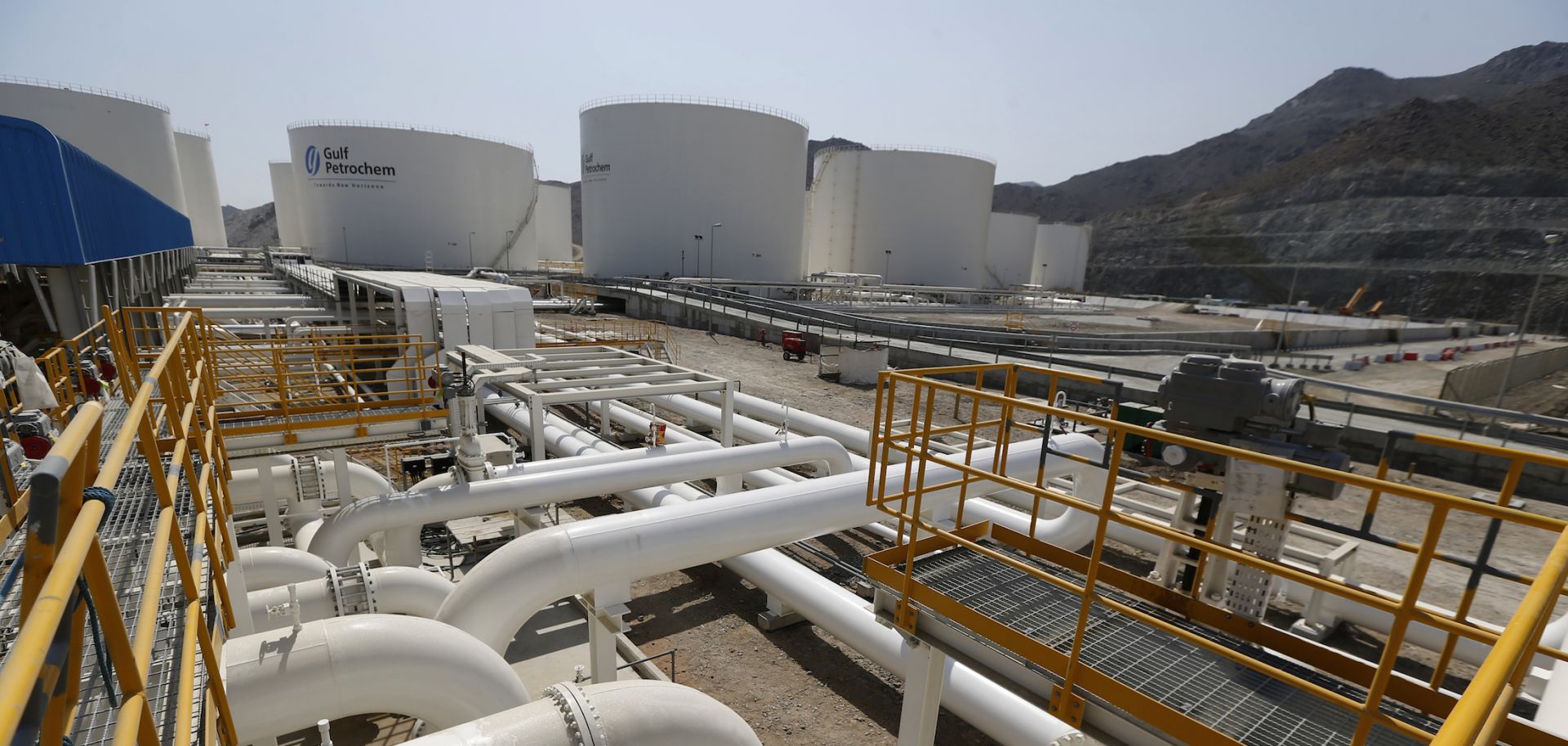One million barrels of Emirati crude oil reportedly arrived June 21, 2012, at the United Arab Emirates' main terminal at Fujairah port through a newly built pipeline. By July, the UAE is expected to export nearly half of its crude without passing through the geopolitically volatile Strait of Hormuz. This is the first major move by a Gulf Arab state to shift the majority of its output away from Hormuz to more secure export zones in the Gulf of Oman.

Roughly 40 percent of the world's seaborne crude passes through the Strait of Hormuz every day. This gives Tehran enormous leverage, since the possibility of global economic trauma created by an Iranian attempt to close the strait is the strongest form of deterrence Iran has against a potential military strike by the United States and Israel.
Arab states are trying to diversify their export options, and there are several alternatives to Hormuz.
- The UAE pipeline, which the Chinese helped construct, has the potential to reach a capacity of 1.8 million barrels per day (bpd).
- The East-West pipeline, or Petroline, which transports oil from Saudi Arabia's Eastern Province to Yanbu port on the Red Sea, has a maximum capacity of roughly 4.5 million bpd, but is currently transporting only 1.9 million bpd. The United States proposed raising the capacity of this line to 11 million bpd.
- The Iraq Pipeline through Saudi Arabia is a 1.6 million bpd line that originates in southern Iraq, goes down through Kuwait and then runs parallel to the East-West line across Saudi Arabia. This pipeline has been out of operation since the first Gulf War, and it will require negotiations between Saudi Arabia and Iranian-influenced southern Iraq to bring back online.
- The Trans-Arabian pipeline runs from Saudi Arabia's Eastern Province, then northwest through Jordan and Syria and ends at the Lebanese port of Sidon, but has been out of commission since 1990.
- Lastly, there is the Kirkuk-Ceyhan pipeline with a maximum capacity 1.6 million bpd. This connects northern Iraq to Turkey for export to western markets. The line is operating at about one-third of its capacity due to insecurity and lack of production. Turkey and the Kurdistan Regional Government may be developing another export line that would bypass Baghdad's authority. If a connector is built from Haditha, in central Iraq, to Baiji, in northern Iraq, then more southern Iraqi oil could reach Turkey's Mediterranean ports.



